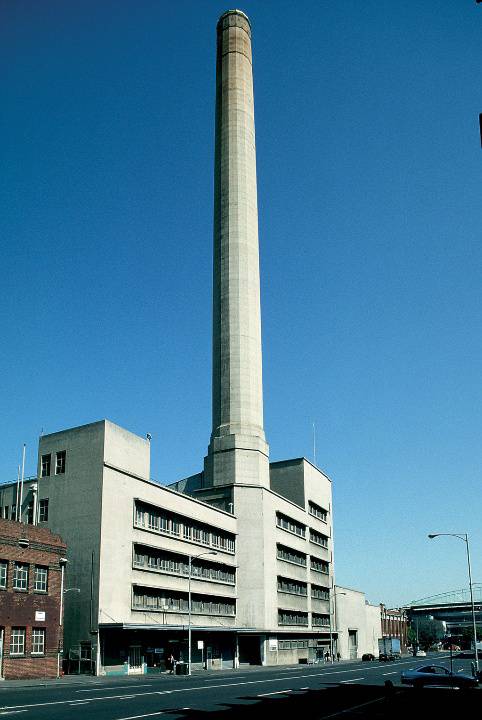| Back to search results » | Back to search page » |
|
Former Melbourne Power Station
Other NameFuel Bay & Amenities Block Location204 - 240 Spencer Street,,, MELBOURNE VIC 3000 - Property No B6614
File NumberB6614LevelState |
|
Statement of Significance
File note May, 2010: Everything demolished except office& economiser buildings and overhead water tank. See (B6983) File note December 2016: Office facade remains, with apartment building behind. What is significant? A power station to generate electricity was established on this corner in 1894 by the Melbourne City Council, initially to supply electricity for street lighting. The establishment of the Melbourne City Council Electricity Supply Department (MCCESD) was a major departure from privately owned power generators at the time, and the City of Melbourne was the first to do so. It was one of only four generators in the State at the time, and produced half the electricity then produced. The popularity of electricity for a range of purposes led to the rapid expansion of the facility, which saw the original turbine room and boiler house greatly expanded and altered many times before WWI. In 1907 the original station manager's residence and offices on the corner were replaced by a large chimney and coal facility. This chimney was dismantled in the 1970s and reconstructed at the Williamstown Railway Museum and the corner used as a coal yard. The Offices facing Spencer Street replaced the front part of the 1894 turbine hall in 1908, and the Economiser Building was constructed in the same year attached to the engine room which ran along Little Bourke Street. They were designed by the MCCESD. In the 1920s the large 1880s cast-iron water tank associated with the operation of the hydraulic power supply in the CBD was installed adjacent to the office buildings / turbine hall, suspended over a laneway (This is separately classified B6983). In the mid 1950s the larger part of the site facing Lonsdale Street was redeveloped as a modern gas fired power station, which operated until 1981. In 2008/9 the 1950s section of the power station was demolished, as well as many other earlier buildings, including the one remaining structure from 1894, the turbine hall behind the office building.
The Offices are in red brick with a parapeted facade with cement render dressings forming Renaissance Revival window surrounds on the upper level, large arched windows on the lower level and an elaborated doorway.
The Economiser building is in red brick, with a gable roof, in a temple-like form with a prominent rendered cornice, a pediment like gable end, and tall arched windows set in rectangular brick reveals.
The coal yard is an open space enclosed by the two buildings and a 1980s Victorian style fence on the street sides.
How is it significant? The Offices, Economiser Building and coal yard of the former Melbourne Power Station are significant for historic, architectural, and technical reasons at a State level.
Why is it significant? The Offices, Economiser Building and coal yard of the former Melbourne Power Station are of historical significance as the last remnants of Victoria's first municipal electricity supply station. They are also amongst the oldest buildings associated with electricity supply in Victoria.
The buildings are of architectural significance as relatively elaborate industrial buildings. The Offices are a fairly typical Edwardian classically inspired facade, while the Economiser building is notable for its almost temple-like form, with a front pediment and regular arched windows on the side elevation.
Classified: 06/06/1994.
Revised: 29/01/2007
Report Revised: 27/09/2010
Group
Utilities - Electricity
Category
Generator/Power Station - coal/gas/oil




